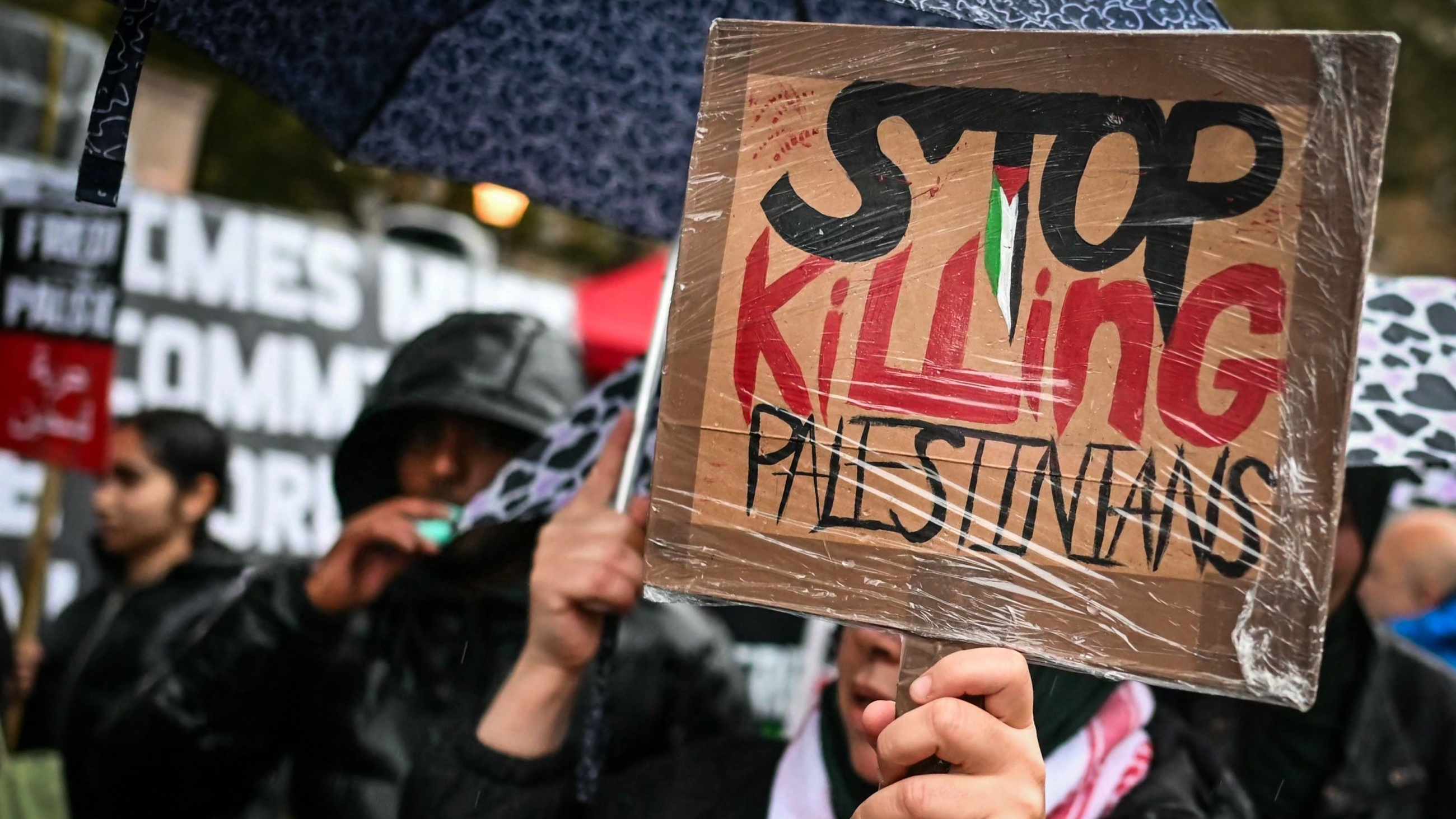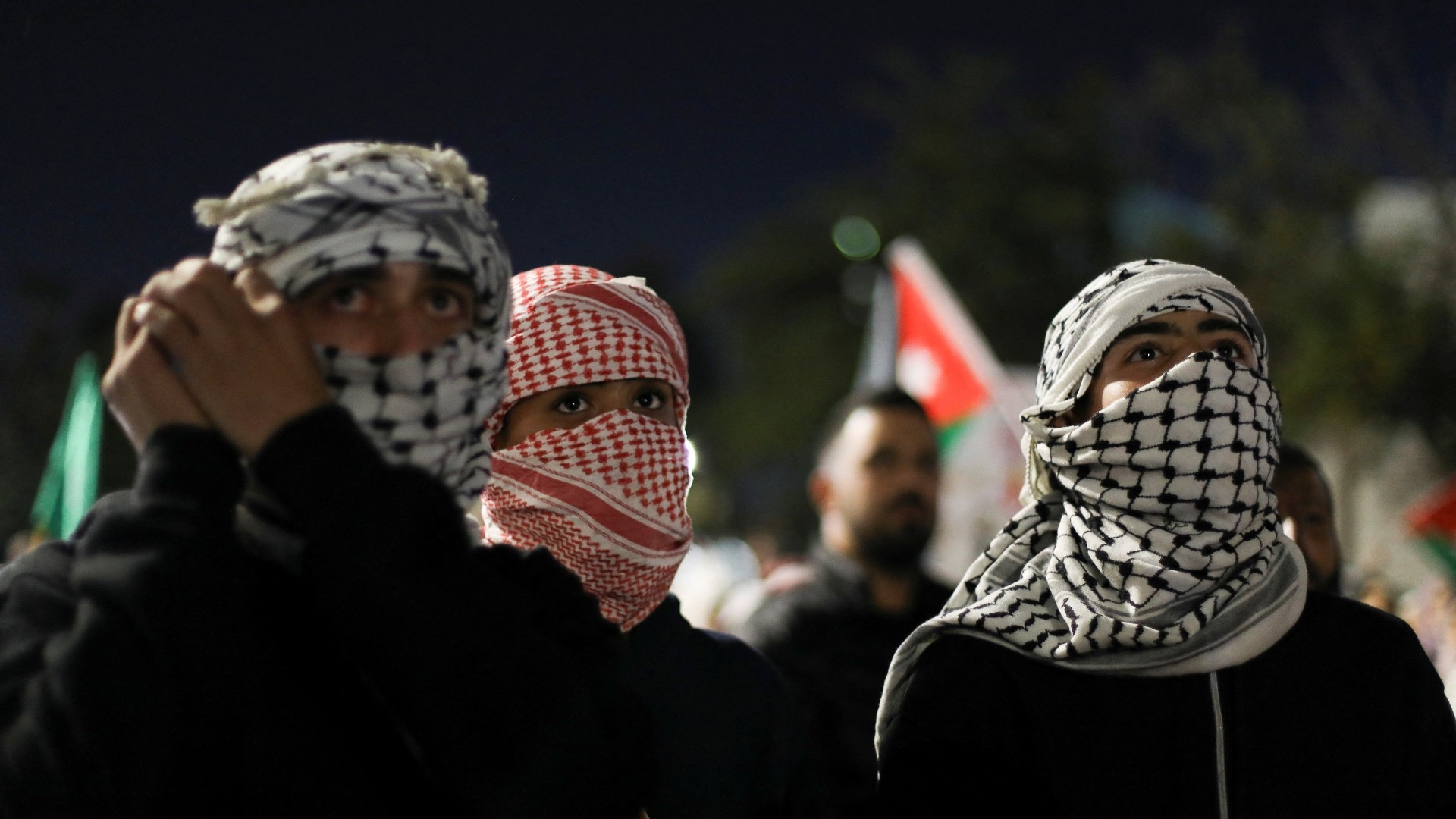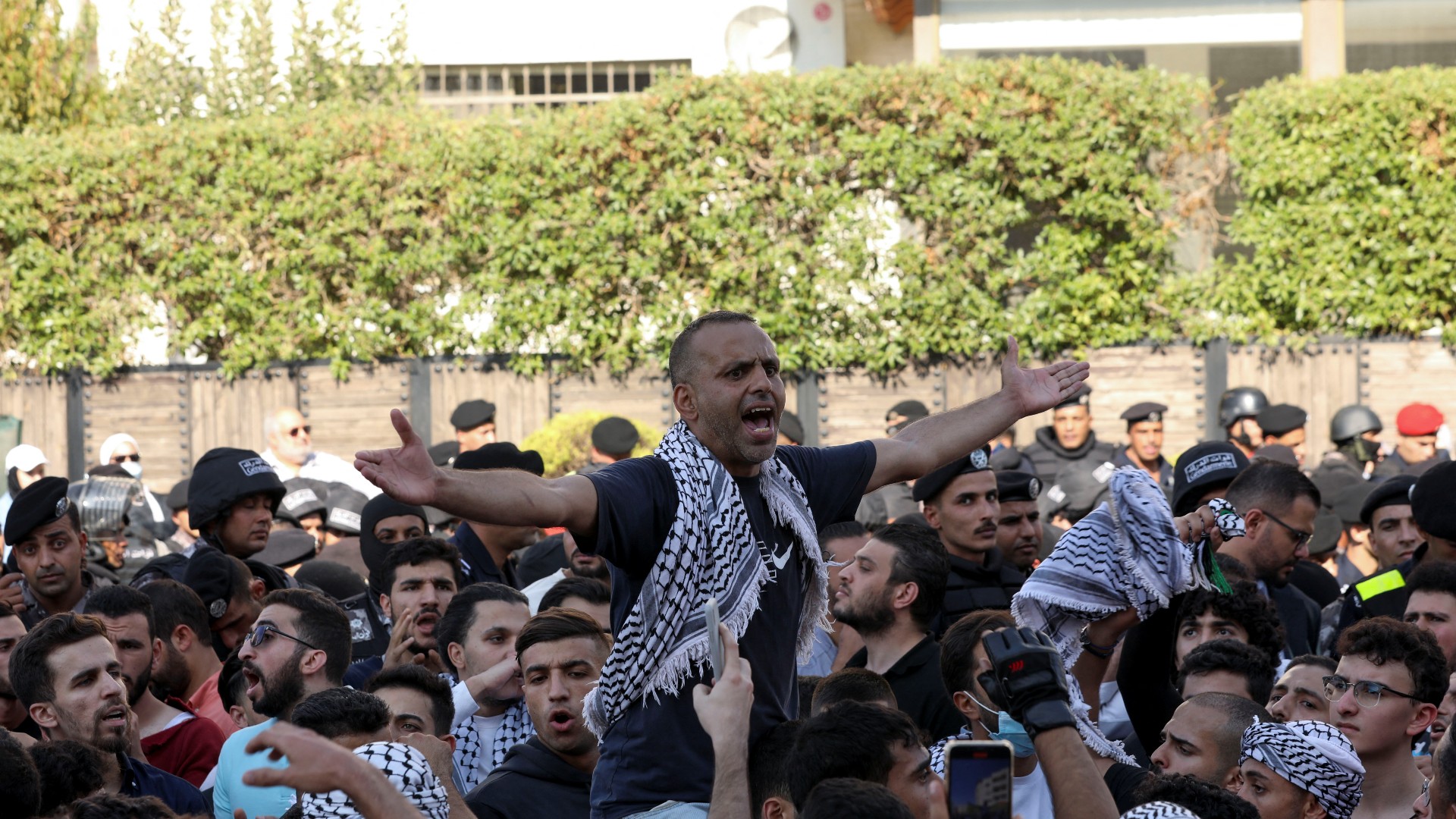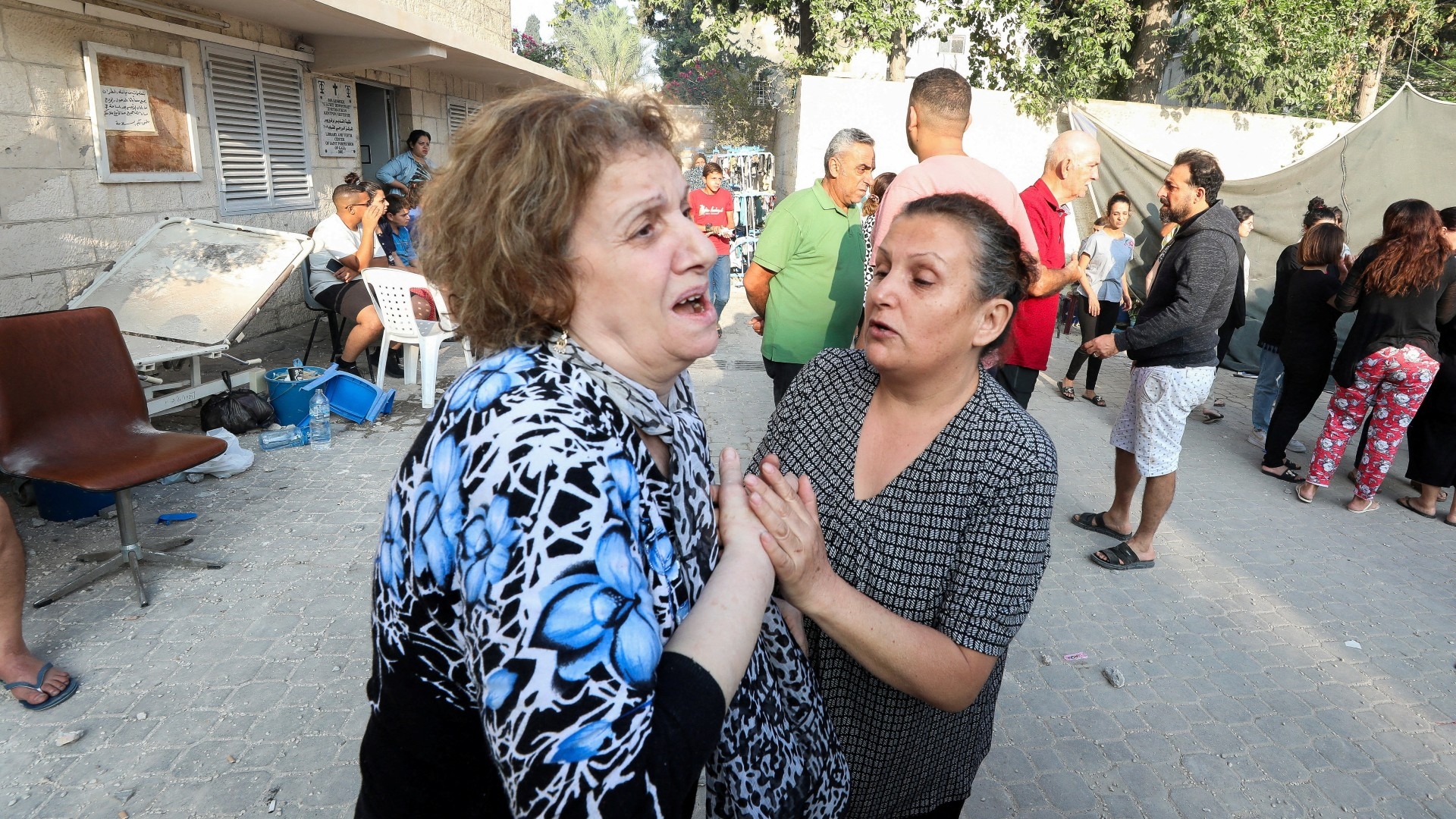As New Nuclear Dangers Emerge: A Look Back at Cuban Missile Crisis
Reprinted with permission from Greg Mitchell’s newsletter Oppenheimer: From Hiroshima to Hollywood.
A little change of pace today, as we look back 61 years this week to the beginnings of the gravest nuclear crisis of our era, involving JFK, Castro, and Soviet missiles in Cuba. Ah, I remember it well. The below focuses on the not-so-extensively covered very early stages. It is an excerpt from my 2016 bestseller, The Tunnels: Escapes Under the Berlin Wall, which among other things revealed the Kennedy White House trying to kill, that same autumn, one of the most important TV specials ever, from NBC, documenting one of those astounding passages to freedom.
Note: As I have long said, U.S. nuclear “first-use” policy remains in effect today.
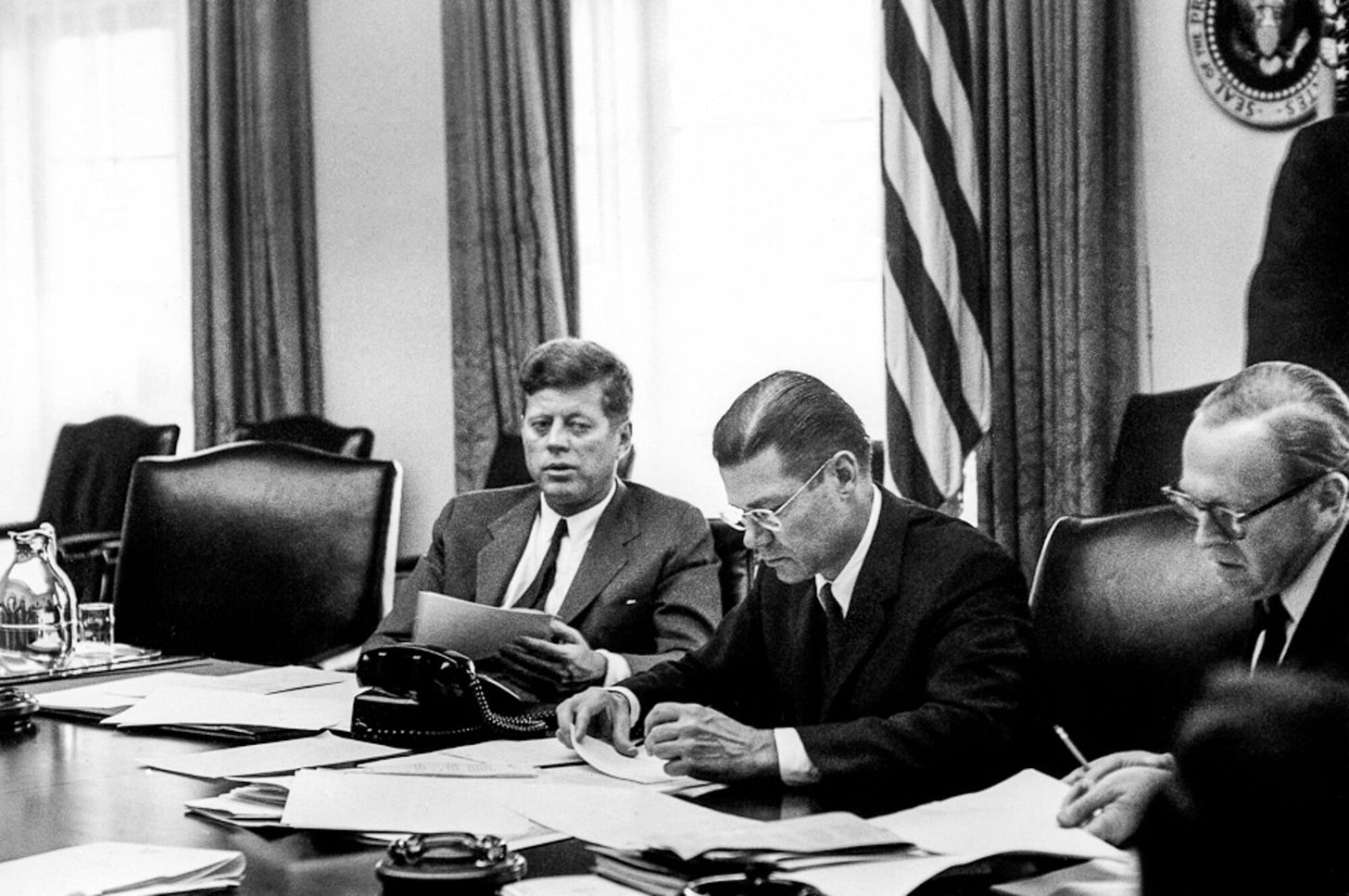
October 16, 1962: For over a month, leading Republicans, and a few media pundits, had charged – based on little apparent evidence – that the Soviets were placing nuclear missiles in Cuba. CIA director McCone, a Republican, had privately voiced this fear to the President, who remained skeptical even as he expanded U-2 surveillance of the island. JFK was not alone in feeling that this might turn out to be just another GOP campaign issue that would evaporate after November. Berlin remained his constant concern. He had told Ted Sorensen, “If we solve the Berlin problem without a war, Cuba will look pretty small. And if there is a war, Cuba won’t matter much either.”
As weeks passed, however, a Soviet military buildup continued in Cuba, so Kennedy ordered more careful study, including a U-2 flight directly over the island on October 14. The following day CIA analysts in Washington studied the photos that resulted. New missiles longer than the defensive SAMs seemed to have arrived on the island,. They could only be medium-range, nuclear-capable SS-4s or their cousins. The President was in New York on a campaign trip so McGeorge Bundy waited until the next morning to inform him.
When October 16 dawned, President Kennedy, back in D.C., responded to Bundy’s startling news by calling the first meeting on the confirmed nuclear threat later that morning. The missiles were not yet operational, but soon would be, with the capability to strike at least the southern half of the U.S. mainland. Already JFK was outlining four options: hit just the missile sites; blast them plus other military sites; do all that and also enact a blockade; or all of that plus invade the island. On his note pad he scribbled scraps of words: Prepare. Berlin. Preparatory. Cuba. Preparation. Cuban uprising. prepare. nuclear. Vice President Johnson, more hawkish than nearly anyone, volunteered that massive air strikes could be carried out without even informing Congress or America’s allies. The meeting ended with the Pentagon ordered to study how air strikes and an invasion might proceed.
Robert Kennedy handed his notes on the meeting to the President’s secretary. One read: I now know how Tojo felt when he was planning Pearl Harbor.
At a morning meeting the next day, Undersecretary of State George Ball argued against military action, claiming the Soviet leaders didn’t really understand the gravity of their Cuba move. Ambassador Thompson, back from Moscow, took issue with this, stating that the Soviets’ aim was to force a showdown on Berlin; General Taylor and John McCone agreed with him. Kennedy left for a long-planned meeting with West German foreign minister Gerhard Schroeder. He did not mention Cuba to him, but Kennedy had to wonder: Were the Germans ready for a Soviet retaliatory strike or another Berlin blockade?
The next major meeting on Cuba was convened on the morning of October 18, day three of the crisis. While JFK was away on another campaign trip, aides and military leaders had discussed options, as air strikes – with or without a warning to Khrushchev, and with or without an invasion – gained wide favor. (The military projected 18,500 U.S. casualties in a conventional invasion, but if nuclear weapons were used, General Taylor dryly advised, “there is no experience factor upon which to base an estimate of casualties.”) George Ball responded with a strongly dissenting memo, arguing that air strikes would smack of Pearl Harbor – echoing Bobby Kennedy on this – and turn much of the “civilized world” against America. But some felt that a strong U.S. action on Cuba, rather than jeopardizing our standing in Berlin, would boost our credibility in dealing with the Soviets down the road.
As the October 18 meeting on the crisis proceeded, Kennedy returned to an argument he had made before: that the Soviets, in response to any military attack on Cuba, would likely “just grab Berlin.” Sacrificing a few Cuban missiles for control of all of Berlin would not “bother” the Soviets at all. And once they took the city, “everybody would feel we lost Berlin, because of these missiles.” Bundy cracked a small joke: “If we could trade off Berlin – and not have it our fault….”
Then came a grim exchange after JFK again said that the Soviets, if attacked in Cuba, would probably cross the Berlin border with ground troops.
McNamara: We have U.S. troops there. What do they do?
Gen. Taylor: They fight.
McNamara: They fight. I think that’s perfectly clear.
President Kennedy: And they get overrun.
Robert Kennedy: Then what do we do?
Gen. Taylor: Go to general war, if it’s in the interest of ours.
President Kennedy: You mean nuclear exchange. (Then a brief pause.)
Gen. Taylor: Guess you have to.
The President, therefore, insisted on considering “what action we take which lessens the chances of a nuclear exchange, which obviously is the final failure.” Apocalypse had reared its ugly head, just in time. Henceforth the discussion – led by Rusk, McNamara and Robert Kennedy – shifted in a more dovish direction, towards trying a blockade. The Joint Chiefs opposed this, still favoring a pre-emptive attack, but within minutes a consensus began to coalesce among the non-military aides in the room. A blockade was best, along with a potential concession to scrap our outmoded nuclear missiles in Turkey. In a revealing moment, McNamara virtually pleaded, “I really think we’ve got to think these problems through more than we have.”
At a crucial point in the meeting an unlikely player contributed to the meeting’s change in tone, appealing to Kennedy to insist on a blockade: “Essentially, Mr. President, this is a choice between limited action and unlimited action – and most of us think that it’s better to start with limited action.” The speaker was Roswell Gilpatric, number two man at the Pentagon, who just two months earlier Kennedy himself had fingered as the likely leaker in the Hanson Baldwin case. Gilpatric, seemingly forgiven – and despite his history of leaking secrets to a journalist – had been attending crucial meetings on the missile crisis and joining in the highly classified discussions. (The FBI investigation into both Baldwin and Gilpatric, meanwhile, continued.)
After the meeting broke up, JFK met with Andrei Gromyko, the Soviet foreign minister. Gromyko lied to Kennedy’s face, denying the presence of offensive missiles in Cuba as the President tapped his desk, exercising supreme self-control, knowing that he had photos that proved otherwise in a top drawer.
Near midnight, after everyone had left the Oval Office, the President turned on his taping system to record his summary of this day. Though the crisis revolved around Cuba, much of JFK’s musings still concerned Berlin. He noted Bundy’s warning of “a Soviet reprisal against Berlin” after any U.S. military action. Others felt that failing to take strong action on Cuba would undermine our promises to the West Germans, “divide our allies and our country.” Kennedy concluded: “The consensus was that we should go ahead with the blockade beginning on Sunday night.” If the Soviets did move on Berlin – well, we faced “a crunch” there in a few months, anyway. And a blockade would be a lot less likely to inspire that Soviet reaction than a military assault on Cuba.
Then he went upstairs to sleep on that decision, if he could.
Thanks for reading Oppenheimer: From Hiroshima to Hollywood! Subscribe for free to receive new posts and support my work.
Greg Mitchell is the author of a dozen books, including “Hiroshima in America,” and the recent award-winning The Beginning or the End: How Hollywood – and America – Learned to Stop Worrying and Love the Bomb, and has directed three documentary films since 2021, including two for PBS (plus award-winning “Atomic Cover-up”). He has written widely about the atomic bomb and atomic bombings, and their aftermath, for over forty years. He writes often at Oppenheimer: From Hiroshima to Hollywood.










